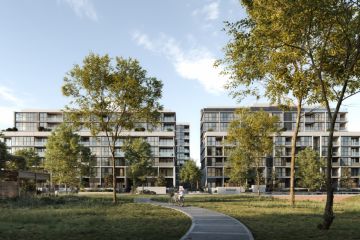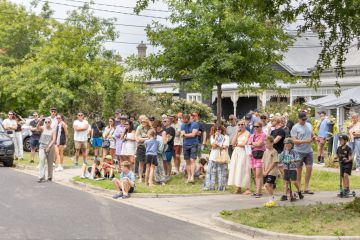Is the rent too high? These cities make New York - and Australia - look cheap

As people around the world move into cities and look for housing, one thing is clear: Most will have a hard time paying for it.
Average monthly take-home pay won’t cover the cost of buying a 92-square-metre residence or renting a three-bedroom home in any of the 105 metropolitan areas ranked by the Bloomberg Global City Housing Affordability Index – based on a general rule of thumb among U.S. lenders that people should spend no more than 28 per cent of net income on housing costs.
Only 12 cities would be considered affordable if they spend 50 per cent.
Residents face many obstacles, including urban land-use regulations, underdeveloped rental markets and difficulty getting financing, according to Enrique Martínez-García, a senior research economist at the Federal Reserve Bank of Dallas who studies housing prices. Policy solutions to these problems aren’t clear, he adds.

“Not having access to credit is a challenge to develop a healthy housing market,” he said. “But opening it up too fast might be a problem as well; it might actually lead to a boom-bust episode.”
- Related: Renting apartments not always cheaper
- Related: Inner city Sydney property prices slump
- Related: Phase two of housing debate
The Bloomberg index calculates the affordability of renting or buying in city centres and suburbs. Rankings are based on self-reported data, including net salary and mortgage interest rates, compiled by Numbeo.com, an online database of city and country statistics.
Numbeo ranks Sydney at 27th out of 521 cities for highest cost of living, followed by Perth, Darwin, Melbourne and Adelaide. 
Since 2012, 48 cities in the Bloomberg index have become less affordable, while affordability improved in 51. (Historical data aren’t available for all 105.) In nine of the bottom 10, average net income fell, while income in eight of the top 10 cities rose as rental and mortgage costs declined.
Emerging economies currently have the least-affordable housing, led by Caracas and Kiev in Ukraine. The remaining cities among the bottom 20 include seven in Asia (four are Chinese) and six in Latin America.
In Rio de Janeiro, Brazil’s second-largest city, average monthly take-home pay of $US640 ($818) won’t unlock a rental even on the outskirts of town, let alone provide the means to buy a house or apartment in the city centre, where monthly mortgage payments approach $US2,000.

This contributes to multiple-income households and also may explain why more than one in five Rio residents lived in informal shantytowns called favelas in 2010, the most recent data available. Six of the 10 cities with the greatest deterioration in the past five years are in Latin America.
Seven of the top 10 most-affordable cities are in North America: four in the U.S. and three in Canada. The least-affordable metro area in the two countries is Vancouver, where an influx of foreign cash has caused a surge in home prices. New York ranked near the middle of the index.
Sydney is the worst performing Australian city ranked, with affordability at 75 to 99.9 per cent of a net monthly income – in the same ranking as Vancouver, San Francisco, Seoul and Tokyo, putting the harbour city in the middle of the pack, globally.
Brisbane, Melbourne and Perth all rank in the 50-74.9 per cent bracket, putting them in the second most affordable group. Canberra is the most affordable, at 0 to 49.9 per cent.
Two of the cities with the greatest improvement are in China: Shenzhen and Guangzhou. Even so, housing demand across the country continues to outweigh supply, “despite rapid construction and the large-scale delivery of new homes” in cities including Shenzhen, according to Kate Everett-Allen, head of international residential research at real-estate consultant Knight Frank in London.
That’s because of “mass urbanisation” and relatively low wages, she said, adding that home prices in several cities grew at an annual rate of as much as 40 percent last year.
Four Chinese metro areas, including Hong Kong, were among the 20 least-affordable in the index.
With Fairfax Media.
Methodology: The Bloomberg Global City Housing Affordability Index ranks 105 global and regional financial centers. Housing costs are based on the average of four components: the monthly mortgage payment for a 1,000-square-foot residence and monthly rent for a three-bedroom apartment in city centers and suburbs. Calculation of the monthly mortgage payment is based on putting 20 percent down and having a 30-year fixed-rate loan. The data Bloomberg used for the calculations are self-reported and compiled by Numbeo.com as of June 30, 2017. Only cities with a minimum of 15 responses for all related metrics are included.
We recommend
We thought you might like
States
Capital Cities
Capital Cities - Rentals
Popular Areas
Allhomes
More







